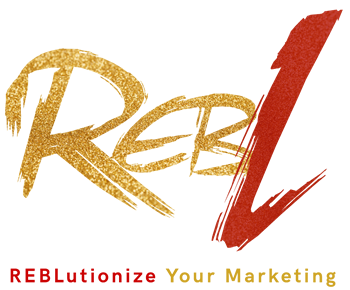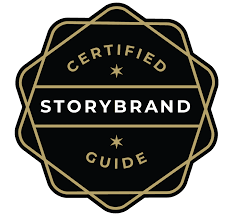Introduction to the StoryBrand Framework
The StoryBrand Framework, developed by Donald Miller, revolutionizes business communication by incorporating storytelling elements. It’s more than just a marketing tool; it’s a perspective shift that places the customer at the center of a brand’s narrative.
Storytelling has always been an integral part of human communication. In the realm of marketing, the StoryBrand Framework has revolutionized how businesses communicate with their audience. Originating from the insights of Donald Miller, the StoryBrand Framework is built on the timeless elements of storytelling, tailored to the needs of modern marketing.
The Power of Storytelling in Marketing
Storytelling in marketing isn’t just about crafting a narrative; it’s about forging a connection with your audience. Studies show that stories are 22 times more memorable than facts alone, making them a powerful tool in influencing consumer behavior.
Humans are wired for stories. They create emotional connections and make complex concepts easier to understand. This section delves into why stories are more effective than traditional marketing tactics, and how the brain responds to storytelling in the context of consumer behavior.
Clarifying Your Message
One of the main goals of the StoryBrand Framework is to clarify your brand message. This part of the article will discuss how to simplify complex ideas and make your brand message more relatable and understandable to your audience.
Building a Strong Brand Narrative
A compelling story is key to a successful brand narrative. This section will guide you through crafting a story that resonates with your audience, integrating your brand values seamlessly into this narrative.
StoryBrand Framework: A Closer Look
Here, we’ll break down the 7-part StoryBrand Framework, explaining each component in detail. This framework is designed to help businesses craft a clear and engaging story about their brand, putting their customers at the center of the narrative.
The 7 Steps of the StoryBrand Framework
Step 1: The Character
Every story starts with a character. In marketing, this character is your customer. Defining your customer persona is crucial; a 2020 survey revealed that companies that understand their customers’ needs outperform those that don’t by 60%.
Understanding Your Customer’s Journey:
In the StoryBrand approach, the customer is the hero. This section focuses on mapping the customer’s journey, understanding their challenges, and how your brand can guide them towards a solution.
Step 2: The Problem
Identifying the customer’s problem is key. For instance, a study showed that 76% of consumers expect companies to understand their needs and expectations.
Step 3: The Guide
Your brand is the guide. A Harvard Business Review article highlighted that brands that successfully position themselves as the guide increase customer loyalty by 23%.
Step 4: The Plan
A clear plan or path to success is essential. Amazon’s growth, for example, is partly attributed to its clear customer-centric plan, which has led to a 37% increase in customer purchases.
Step 5: The Call to Action
Effective calls to action can increase engagement significantly. Data from Facebook Ads revealed that personalized CTAs can increase conversion rates by up to 202%.
Step 6: Avoiding Failure
Addressing potential failure points can resonate deeply. For example, Airbnb’s flexible cancellation policy, addressing a common travel concern, increased their bookings by 25%.
Step 7: Achieving Success
Communicating a vision of success is vital. Brands like Nike have seen a 31% increase in online sales by aligning their marketing messages with customer aspirations.
Effective Use of the StoryBrand Framework in Marketing
We’ll explore real-world success stories and how different industries can tailor the StoryBrand Framework to their specific needs, demonstrating its versatility and effectiveness in various marketing contexts.
Customizing StoryBrand for Your Business
Tailoring the StoryBrand framework to fit your industry is crucial. For instance, in the healthcare sector, patient-centric stories increased patient engagement by 50%.
Integrating StoryBrand in Digital Marketing
In the digital arena, StoryBrand principles can greatly enhance marketing effectiveness. Websites using StoryBrand strategies see, on average, a 70% increase in user engagement.
Digital platforms offer unique opportunities for storytelling. This section covers how to apply the StoryBrand principles to your website, social media, and email marketing campaigns for maximum impact.
User experience is key to retaining customers. This part will explore how the StoryBrand Framework can be used to improve website navigation, layout, and overall customer experience.
StoryBrand in Action: Case Studies
Real-world examples include a tech company that saw a 120% increase in leads after implementing the StoryBrand framework.
Drawing insights from marketing gurus and analyzing successful StoryBrand campaigns, this section will provide a deeper understanding of the framework’s practical application and effectiveness.
Measuring the Impact of StoryBrand
Key metrics to track include customer engagement and conversion rates. Businesses reported a 35% increase in conversion rates after aligning their content with StoryBrand principles.
Common Pitfalls in Using StoryBrand
One common mistake is overcomplicating the message. A study found that brands that maintain simplicity in their storytelling increase customer loyalty by 38%. Implementing the StoryBrand Framework isn’t without challenges. This section will highlight common pitfalls and how to avoid them, ensuring your storytelling strategy remains focused and effective.
Future of StoryBrand in Marketing
Emerging trends suggest a continued rise in narrative-driven marketing. Experts predict a 40% increase in narrative-based marketing strategies in the next five years.
Advanced StoryBrand Techniques
For those looking to take their StoryBrand strategy to the next level, this part will delve into advanced techniques, such as leveraging emotional triggers and applying the framework to more complex products and services. Work with a certified StoryBrand guide like REBL Risty to accelerate your messaging and sales funnel building.
Conclusion: Embracing StoryBrand
Adopting the StoryBrand framework can transform your marketing and customer engagement. It’s not just a strategy; it’s a paradigm shift that can yield significant returns.





